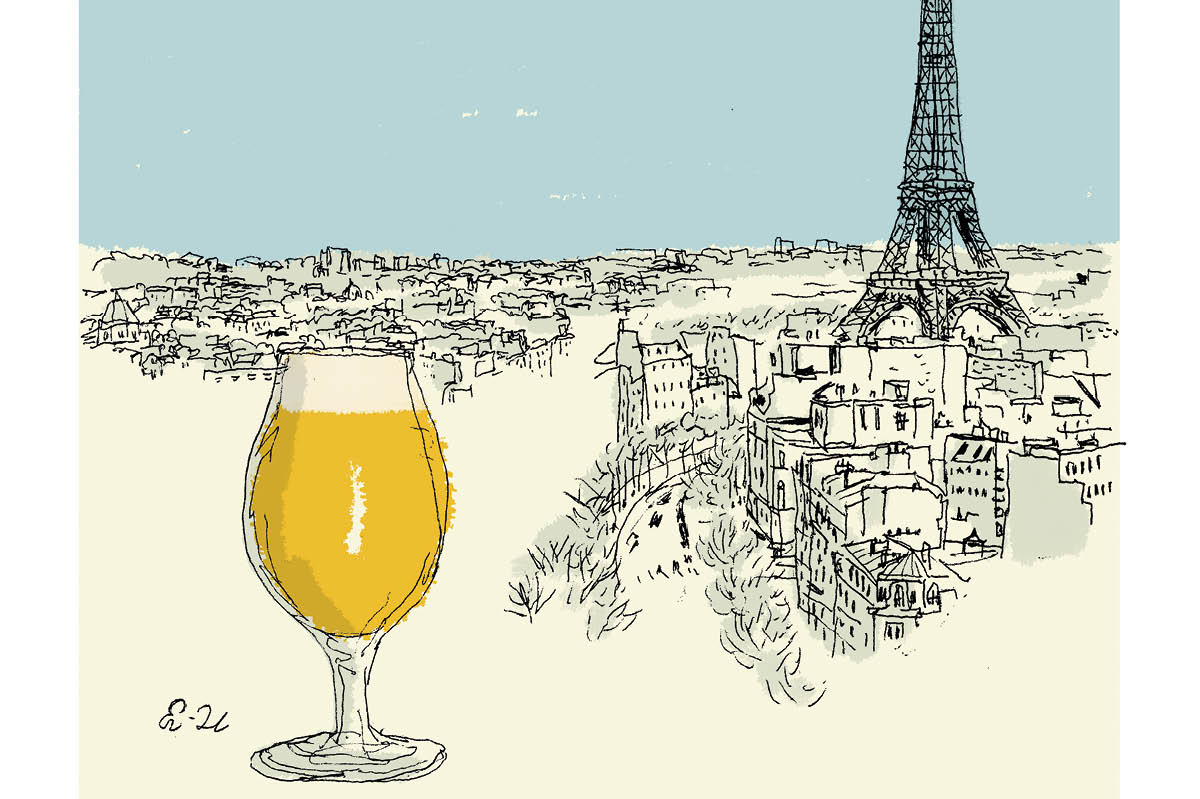French Beer Rises
Kathleen Willcox at The Spectator

If the dozens of cartoonish stereotypes that flood my mind when I think of France — grand Bordeaux estates, snails and frog legs dripping in garlic butter, elegant women striding down the Champs-Élysées, a glittering Eiffel Tower at night — a stein of hoppy beer is nowhere to be found. France is not known for its pints. And yet, much to the concern of its vineyards and winemakers, that could be changing.
“There has been a real explosion of breweries all over France in the past few years,” says Alexandra Berry, a Paris-based beer and hops sales consultant and the author of From Earth to Beer: The Expression of Terroir in a Glass. “General sales in wine have started to decrease in France in part because the industry has started to seem a little dated and overrated.”
Whereas wine can seem very intimidating, requiring esoteric knowledge before being able to appreciate the relatively expensive product, beer is beer. It’s fun, it’s friendly, it’s something people can learn about as they go along — and in the end, it’s much more affordable.
The French have been drinking fermented grape juice for millennia, and drink on average 47.4 liters per capita of local wine per year. But it’s going down, and beer is ascendant. Wine consumption is down 15 percent year-over-year in France; between 2014 and 2021, les français under thirty-one went from purchasing wine 31 percent of the time when they bought alcohol, to only 23 percent of the time. During the same period, beer purchases rose to 39 percent from 24 percent. The pattern is less pronounced among older demographics, but it still holds true; even the over-fifties have increased their beer spending, leaving more wine on the shelves.
In 2023, the French government distributed $215 million to help vintners destroy surplus wine and transform it into perfume and hand sanitizer. A portion of those millions is earmarked to rip out vineyards and replace them with olives and other, more viable streams of agricultural revenue. By contrast, the number of breweries in France has ballooned from 322 in 2009 to more than 2,500 as of 2021. Microbreweries represent 92 percent of that number.
It’s tempting to see this as a libationary French Revolution, modeled after and following (rather tardily) on the heels of the American craft beer renaissance. “France initially followed the trends happening in the US and the UK,” Berry says. “We seem to always be about ten years behind the US and five behind the UK.”
To a degree, France’s beer scene perfectly demonstrates this. The first French craft breweries began opening around 2012, primarily with classic blonde, blanche and brune offerings. A few years later, IPAs landed on their shores, popularized by American hipsters.
But the French paradigm is perhaps, le sigh, too complex to wedge neatly into a six- ty-character headline. Though unfamiliar to modern stereotypes, France has a long history of home brewing, temporarily extinguished from time to time by wars and the economic malaise that follows them.
Before World War One, there were just under 2,500 breweries across France and Belgium, with most of the French breweries in the northern part of the country near Germany and Belgium. After the war, destruction, widespread death and long-term ingredient rationing meant the small-scale brewing community never really bounced back — more than 900 breweries had closed between 1914 and 1918 — and larger, mass-production operations like Kronenbourg took hold.
Read the rest (subscription may be required)





